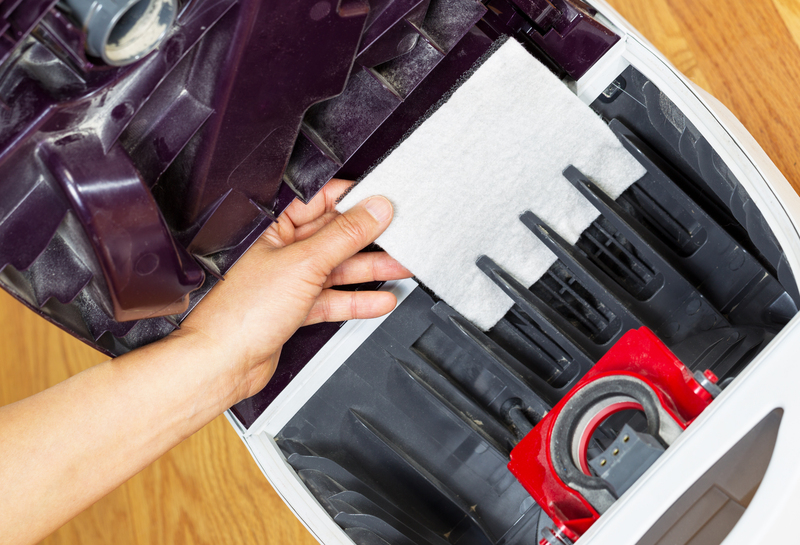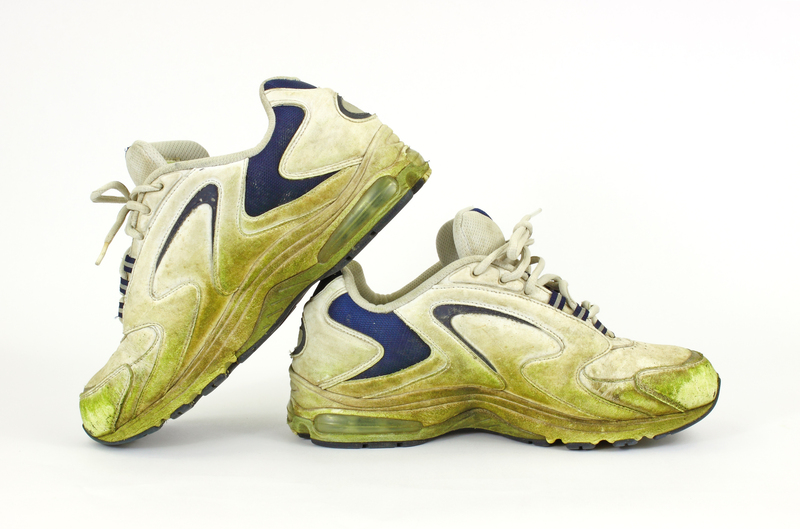Achieving Excellence: Curtain Cleaning Done Right
Posted on 05/10/2025
Achieving Excellence: Curtain Cleaning Done Right
Curtains are more than pieces of fabric that adorn our windows — they play a critical role in designing and brightening our living spaces, maintaining privacy, and improving indoor air quality. Achieving excellence in curtain cleaning is an art and a science. In this comprehensive guide, we delve deep into the essentials and expert strategies for curtain cleaning done right, ensuring longevity, fresh appearance, and a healthier home environment.

Why Proper Curtain Cleaning is Essential
Curtains act as silent sentinels against dust, pollen, and airborne pollutants that permeate through open windows. Over time, without adequate maintenance, curtains accumulate dirt, allergens, mold spores, pet dander, and even odors — all of which can impact aesthetics and well-being.
- Improved Air Quality: Regular curtain cleaning helps in reducing allergens and dust particles that may cause respiratory issues.
- Extended Durability: Proper care prolongs the lifespan of your curtains, saving you the cost of early replacements.
- Enhanced Beauty: Clean curtains significantly uplift the look and feel of any room, maintaining their vibrancy and fabric integrity.
- Odor Elimination: Professional or thorough cleaning removes stubborn smells that can seep into fabric fibers.
Understanding Different Curtain Fabrics
Every curtain is unique, with a variety of fabric types and constructions. Recognizing these differences is foundational to curtain cleaning excellence.
Common Curtain Fabrics:
- Cotton: Sturdy and versatile, but may shrink if not cleaned correctly.
- Linen: Breathable yet prone to wrinkling.
- Velvet: Luxurious and heavy, requiring special cleaning methods.
- Silk: Delicate and should be handled with utmost care or professional help.
- Synthetic Blends: Durable and often easier to clean, but always check manufacturer's instructions.
Expert Steps for Curtain Cleaning Done Right
To truly achieve curtain cleaning excellence, following a systematic approach is crucial. Here is a step-by-step process recommended by cleaning specialists:
1. Read the Care Labels
Start by examining the care label attached to your curtains. These vital instructions provide the safest cleaning methods tailored for your specific curtain fabric. Ignoring these guidelines can result in damages like fading, stretching, or shrinking.
2. Dust and Vacuum Regularly
Before embarking on a full wash, always dust or vacuum your curtains using a soft brush attachment. This removes loose dust, pet hair, and pollen, stopping them from embedding deeper during washing or dry cleaning.
- Tip: Work from top to bottom to ensure thorough cleaning.
- Tip: Pay special attention to pleats and hems where dust tends to gather.
3. Spot Clean Stains
For minor stains, spot cleaning can be incredibly effective. Use a mild detergent mixed with water, and gently blot stains with a clean, microfiber cloth. Avoid rubbing, as this may spread the stain or damage the fabric.
4. Machine Washing vs. Hand Washing
- Machine Wash: Ideal for lightweight, machine-washable curtains. Always use a gentle cycle with cold water and a mild detergent. Remove hooks and rings before washing.
- Hand Wash: Best for delicate fabrics or those labeled as hand-wash-only. Soak in lukewarm water with gentle detergent, then rinse thoroughly.
Note: Always check colorfastness before washing by testing a hidden area.
5. Drying Your Curtains Properly
After washing, avoid wringing out your curtains. Instead, hang them up immediately to dry naturally, allowing gravity to help smooth out wrinkles. For tumble-drying, use a low-heat setting if and only if the fabric's care instructions permit.
- Pro Tip: Hang curtains while slightly damp to minimize creases and make ironing easier.
6. Ironing and Steaming for a Polished Look
Wrinkle-free curtains enhance the professional finish of your drapery. Use a warm iron suited for the fabric type, or a standing steamer for delicate materials. Always iron on the reverse side or place a cloth between the iron and curtain.
When to Opt for Professional Curtain Cleaning Services
While many curtains can be cleaned at home, some situations call for the expertise of professional curtain cleaners:
- Heavily Soiled Curtains: If your curtains haven't been washed for years or are stained with grease and grime, professional cleaning yields superior results.
- Large or Fitted Drapes: Extra-wide, lined, or floor-length curtains may require commercial washing machines and expert finishing techniques.
- Delicate Fabrics: Curtains made of silk, wool, or velvet need specialized handling to prevent damage.
- Allergy Concerns: High-powered cleaning removes dust mites, pollen, and bacteria more effectively than home methods.
*Investing in professional curtain cleaning ensures excellence every time and saves you time while protecting your investment.
Secrets to Maintaining Clean Curtains for Longer
Preserving the look and feel of your curtains doesn’t end after a good wash. By incorporating these simple maintenance routines, you can make cleanliness sustainable:
- Ventilate Your Rooms: Proper airflow reduces moisture, the prime culprit behind mold and mildew buildup.
- Regular Dusting: Even between washes, dust and vacuum your curtains to prevent buildup.
- Avoid Direct Sunlight: Prolonged exposure may cause fading; use sheer liners or rotate curtain panels occasionally.
- Monitor for Mold: In humid climates, inspect curtain hems and folds for signs of mold and spot-treat as needed.
- Use Tiebacks: When possible, tie curtains back to reduce dust exposure in high-traffic areas.
Green Curtain Cleaning: Eco-Friendly Methods
Many households today are seeking environmentally friendly curtain cleaning alternatives. Here are green methods that deliver excellent results without harming the environment:
- Use Biodegradable Detergents: Safeguard the planet with plant-based, phosphate-free cleaners.
- Steam Cleaning: Energy-efficient and chemical-free, steaming is excellent for sanitizing and deodorizing.
- Spot Clean with Natural Solutions: Vinegar and baking soda mixtures can tackle odor and mild stains safely.
- Cold Water Washing: Saves energy and is gentler on most curtain fabrics.
Common Mistakes in Curtain Cleaning
To ensure superior curtain cleaning results, avoid these frequent pitfalls:
- Overloading the Washing Machine: Prevent effective cleaning and increases wear and tear.
- Ignoring Care Instructions: May lead to permanent damage and discoloration.
- Using Harsh Chemicals: Can weaken fibers and fade colors.
- Skipping Regular Maintenance: Causes stain buildup that becomes difficult to remove over time.
- Not Removing Accessories: Hooks, rings, and rods should always be taken out before cleaning.
DIY Curtain Cleaning: Step-by-Step Walkthrough
Ready to bring your own curtains back to life? Here’s a streamlined guide for cleaning curtains at home:
- Remove curtains from rods.
- Shake out dust outdoors.
- Vacuum thoroughly on both sides.
- Spot clean stains using a gentle solution.
- Wash as per care instructions (machine or hand).
- Rinse until water runs clear.
- Gently squeeze excess water (never twist).
- Hang to air dry. Use pegs for even support.
- Iron or steam for a crisp, excellent finish.
- Rehang promptly for the best appearance.

Frequently Asked Questions: Curtain Cleaning
How often should I clean my curtains?
For households in urban areas or with allergy sufferers, curtains should be cleaned every 3 to 6 months. Otherwise, once or twice a year is sufficient for maintenance.
Can I machine wash blackout curtains?
Always check the manufacturer’s label—some blackout curtains contain foam linings that may degrade in a washing machine. If allowed, use a gentle cycle and cold water; otherwise, opt for professional cleaning.
What’s the best home remedy for pet stain removal?
Blot stains immediately, then apply a mixture of water and distilled vinegar. Rinse and dab dry. For stubborn stains, baking soda can help neutralize odors.
Should I vacuum my curtains even if they look clean?
Yes—regular vacuuming removes invisible dust and allergens, making a noticeable difference in cleanliness and air quality over time.
Conclusion: Excellence in Curtain Cleaning Achieved
Curtains enrich our living spaces, offering style, privacy, and an element of comfort. By mastering the art and science of curtain cleaning done right, you ensure your window treatments stay beautiful, hygienic, and durable for years to come.
Remember: Excellence in curtain care isn’t just about washing—it’s about understanding your fabrics, following best practices, and embracing regular maintenance. Invest in the right techniques, and your curtains will continue to impress, offering a fresher, brighter home every day.
- Prioritize care labels and fabric-specific methods.
- Opt for eco-friendly cleaning wherever possible.
- Consider professional services for delicate or heavily soiled curtains.
Achieve excellence — make curtain cleaning a seamless part of your home routine, and embrace the difference.



